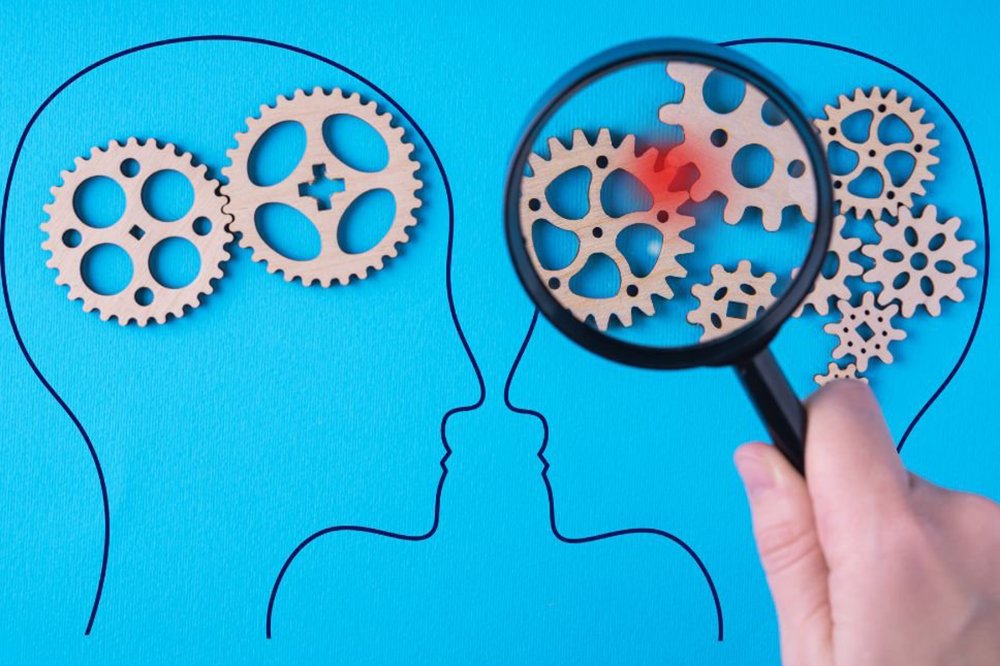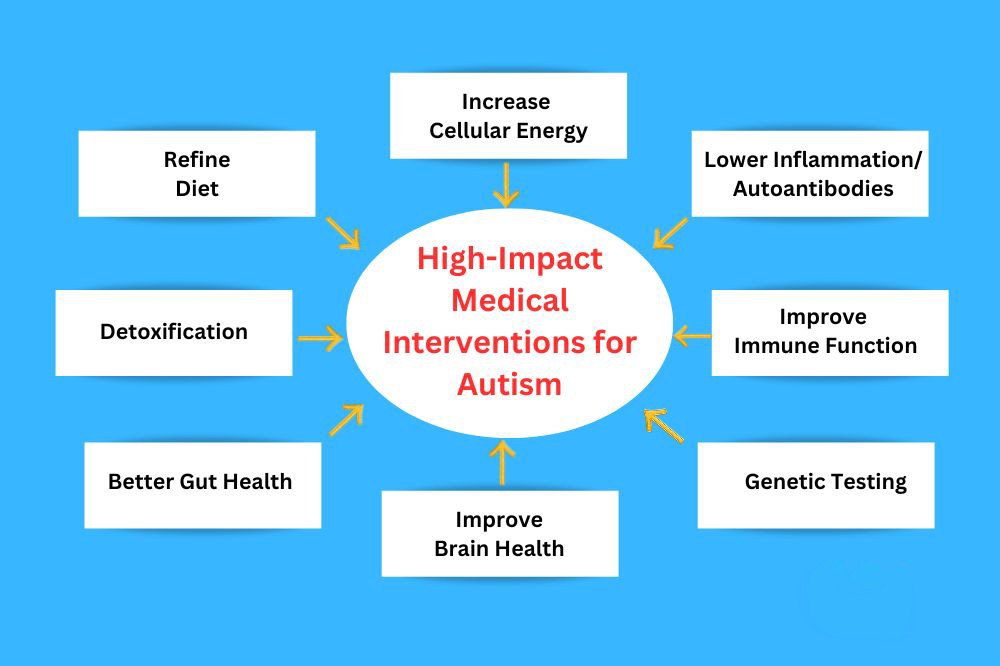Autism Medical Research

All contents of this resource were created for informational purposes only and are not intended to be a substitute for professional advice, diagnosis, or treatment. Always seek the advice of your physician, therapist, or other qualified health providers with any questions or concerns you may have.
This TACA article links recent medical research to topics related to autism. This is by no means a complete list of all the pertinent research. However, these studies have stood out to TACA as noteworthy.
This article will cover recent research on:
- Neuroinflammation
- Mitochondrial Dysfunction
- Linking autism and medical disorders
- Toxic exposure
- Nutritional deficiencies in autism
- Suramin (antipurinergic drugs)
- Gut-Brain link in autism
- Maternal Immune activation

Neuroinflammation Research
Much of the neuroinflammation research in autism is linked back to Mast Cells and PANS/PANDAS as explained in our website articles. However, there are other mechanisms to consider as well. Read the recent research on how inflammation is linked to autism.
IL-37 is increased in brains of children with autism spectrum disorder and inhibits human microglia stimulated by neurotensin (2019)
- Researchers studied the brains of eight children with autism and eight children without the disorder.
- The brains of autistic children had high numbers of a protein called IL-18, which is known to bring about serious inflammatory responses.
- Note: The brains studied were post-mortem brains.
The influence of neuroinflammation in Autism Spectrum Disorder (2019)
- Altered glial structure and function, cytokine profiles and gastrointestinal immune dysfunction are evident in patients with ASD and relevant animal models.
- Moreover, there is strong evidence for nervous system interaction with immune pathways in autism.
Inheritance of HLA-Cw7 Associated With Autism Spectrum Disorder (ASD) (2019)
- Study authors believe this HLA-Cw7 expression may cause chronic immune system activation for a subgroup of people with autism. In fact, this chronic inflammation may be affecting the brain and actually be causing the autism in these patients.
- HLA-Cw7 was present in a much greater frequency than expected in individuals with ASD as compared to the general population.
- HLA-Cw7 has a role in stimulating NK cells.
- Therefore, this may indicate that chronic over-activation of NK cells may have a role in the manifestation of ASD in a cohort of patients with increased immune system/inflammatory features.
Blood biomarker discovery for autism spectrum disorder: A proteomic analysis (2021)
In this study from UT Southwestern Medical Center, researchers have targeted 9 proteins that correlate with autism.
- All nine proteins in the biomarker panel were significantly different in boys with ASD, compared with typically developing boys.
- The proteins also correlated with severity of autism.
- “The more significantly affected the child is, the higher or lower than normal the blood biomarker is”
- Per the linked study, these proteins are DERM, Calcineurin, suPAR, MAPK14, RELT, EPHB2, C1QR1, PTN, FCN1
- These proteins are biomarkers for immune dysregulation, neuroinflammation, and glutamate imbalance.
Neuroimmune transcriptome changes in patient brains of psychiatric and neurological disorders (2022)
- Of 1275 genes studied, autistic brains had 275 (22%) genes that expressed differently than controls.
- The immune gene expression patterns varied by condition, suggesting that there are distinct “signatures” for each one.
- The autism-related expression pattern most closely resembled Alzheimer’s and Parkinson’s immune gene expression pattern.
In Conclusion, this study is more evidence that people with autism could be dealing with upregulated immune genes leading to a neuroinflammatory condition.
Inflammation in the Neurocircuitry of Obsessive-Compulsive Disorder (2017)
- A brain imaging study showed people with OCD have 32% higher levels of inflammation in the parts of the brain that play a role in OCD.
T lymphocytes and cytotoxic astrocyte blebs correlate across autism brains (2019)
- This study shows a fascinating finding in 25 post-mortem brains with autism:
- Lymphatic Cuffs and Blebs in the brain
- The Lymphatic cuffs hold T cells. The cuffs also show up in response to toxins, or antigens given off by a virus, and cause brain inflammation.
- T cells play a large role in the immune response.
Genetically Determined Levels of Inflammation Linked to Neuropsychiatric Illness (2022)
This study says that autism may be genetic, but not in the way that we think…..
- Genes associated with inflammation, particularly interleukin 6, are linked to a reduction in grey matter volume in certain areas of the brain known to be implicated in neuropsychiatric disorders.
- IL-6 is an interleukin that acts as a pro-inflammatory cytokine.
- Additionally, IL-6 over-expressed in areas of the brain associated with conditions such as epilepsy, cognitive dysfunction, autism, and schizophrenia.
- Therefore, findings suggest a direct link between autism and inflammation.
Effect of prednisolone on language function in children with autistic spectrum disorder: a randomized clinical trial (2021)
This is research to see if reducing inflammation with steroids would be helpful for language acquisition.
In boys that had a developmental regression, steroids helped both vocalization and communication. It was especially helpful in the boys that were under the age of 5 years old.
Autoimmune Encephalitis and Autism Spectrum Disorder (2021)
- This well-cited paper helps us understand why it is important to consider the links between autism and infection. In addition, this is another reason why immune modulating interventions can help treat autism.
- Autoimmune encephalitis is brain inflammation as a result of the body attacking itself.
- This paper tells us that Autoimmune encephalitis;
- Could possibly cause autism.
- And/or be misdiagnosed as autism.
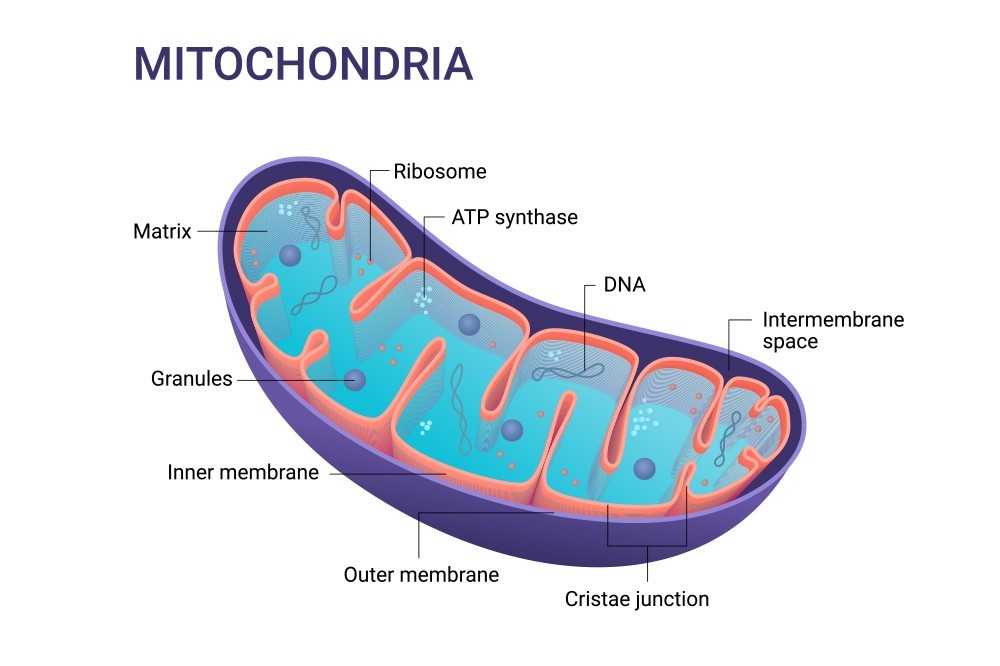
Research on Mitochondrial Dysfunction in Autism
There have now been numerous research studies showing the link between mitochondrial dysfunction and autism. Below we will highlight a few. See this TACA article on Mitochondrial Dysfunction in Autism: Testing and Treatments for more information.
Mitochondrial Dysfunction in Autism Spectrum Disorder: Unique Abnormalities and Targeted Treatments (2020)
- This analysis of research tells us that anywhere from 30-80% of kids diagnosed with autism have mitochondrial dysfunction.
- In addition, based on cited research, the majority of dysfunction is due to environmental influence or toxins, not heredity.
- Mitochondria are very vulnerable to environmental factors.
- 80% of autistic children had low carnitine.
- In 2 studies of immune cells, abnormal Electron Transport Chain complex activity was found in 80% of lymphocytes.
- Some kids have overactive mitochondria which makes them more susceptible to toxins.
- Neurodevelopmental regression may be the hallmark of mitochondrial dysfunction in Autism.
- Most of all, this tells us that autism is treatable.
- This paper includes a chart of supplements used in a mitochondrial cocktail and doses based on weight.
[11C]PBR28 MR–PET imaging reveals lower regional brain expression of translocator protein (TSPO) in young adult males with autism spectrum disorder (2020)
This study out of MassGeneral shows neuroinflammation and mitochondrial dysfunction in autism.
Brain Scans of:
- 15 young adult men with autism
- 18 without autism
Results of brain scans showed:
- LOW LEVELS OF TSPO (translocator protein) in autism
- The men with the most severe symptoms of autism had the lowest amounts of TSPO, which affects inflammation and metabolism.
The brain regions with low levels of TSPO control:
- social and cognitive functioning
- interpreting facial expressions
- empathy and relating to others
TSPO also controls functioning of mitochondria, which produce energy in cells. Many studies have showed that the mitochondria are impaired in autism.
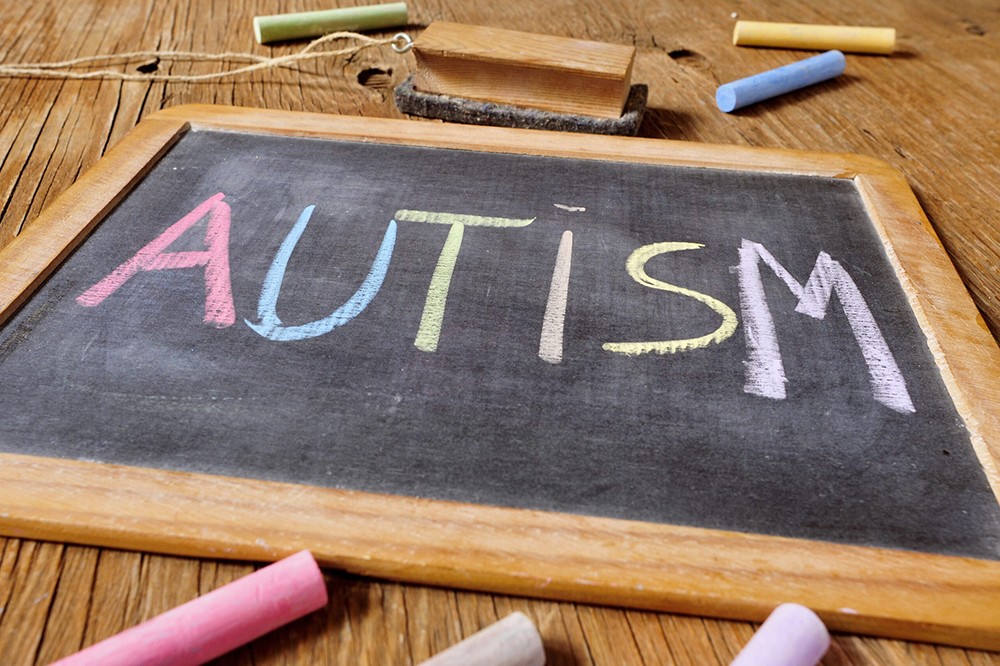
Research showing the link between Autism and Medical Issues
TACA maintains that there is a link between medical issues and autism. Read more about the Underlying Medical Issues in Autism in our TACA article.
Bridging the Gap Between Physical Health and Autism Spectrum Disorder (2020)
This article published in 2020 is an excellent overview of all the medical issues that need addressing in autism. It is a good article to bring to doctor appointments when you need a specialist to take your child’s medical issues seriously. It discusses:
- Autoimmunity in Autism
- Regression and Its Association with Infection, Autoimmunity, and Inflammation
- Allergic Diseases in Autism
- Gastrointestinal Dysfunction in Autism
- Non-Celiac Gluten Sensitivity (NCGS) and Autism
- Seizure Disorders and Epilepsy in Autism
- Metabolic Irregularities, Acquired Mitochondrial Dysfunction and Oxidative Stress in Autism
- Motor Dysfunction, Connective Tissue Disturbance and Movement Disorders
- Sensory Dysfunction and Abnormal Pain Reactivity
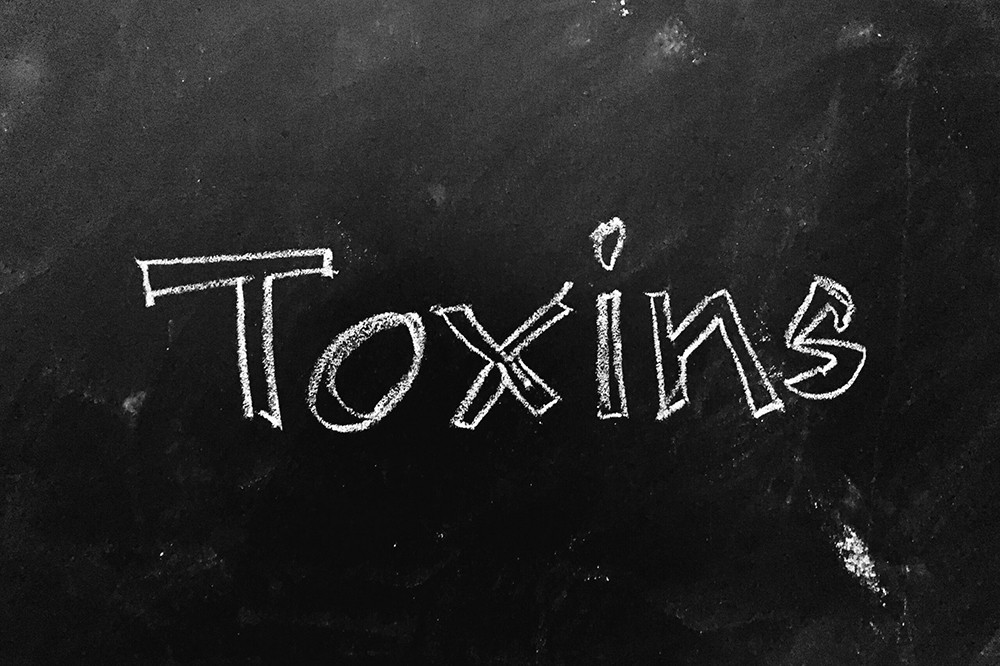
Research on Toxic Exposure resulting in autism
Detoxification strategies help our kids diagnosed with autism. You can find more information on detoxification and autism here.
Elemental Dynamics in Hair Accurately Predict Future Autism Spectrum Disorder Diagnosis: An International Multi-Center Study (2022)
A new test for autism hopes to help doctors diagnose before symptoms show. Researchers have developed a test for autism using a single strand of hair. The test is still in the early stages of development by the startup LinusBio, meaning it is not yet available yet.
How it works:
- The technology uses an algorithm to analyze patterns of particular metals that are associated with autism.
- It looks for patterns of dysregulation in metals that the researchers believe are biomarkers of autism.
- In addition, it identifies the substances or toxins the child has been exposed to over time.
Method:
- This company tested their technology on hair samples from 486 children across three countries: Japan, Sweden and the United States.
- The test is not reliant on concentrations of metals in hair. Instead, it looks at metal metabolization.
- Samples were collected soon after birth, prior to the development of symptoms, and later at diagnosis.
Results:
- In an analysis of 97 hair samples, the algorithm correctly identified cases in which autism spectrum disorder was diagnosed more than 96% of the time.
- It identified negative cases correctly about 75% of the time.
- Overall, the analysis predicted autism accurately about 81% of the time.
Interesting findings:
- The test identified 567 individual features that significantly differed between ASD cases and controls.
- Researchers found two general patterns.
- First, findings indicated a broad pattern of dysregulated elemental dynamics, which spanned every elemental pathway investigated.
- Second, in a subset of essential and non-essential elements, including zinc, lithium, and copper, these effects were almost entirely unidirectional, with ASD cases exhibiting attenuated periodic dynamics relative to controls.
- The same biomarker was consistently found in autism at early infancy (one month old) and also in early adulthood (21 years old).
Association Between Maternal Fluoride Exposure During Pregnancy and IQ Scores in Offspring in Canada (2019)
Fluoride found in pregnant mother’s urine affected the cognitive development of boys more than girls, similar to how autism affects more boys than girls.
- For each additional 1 milligram per liter in concentration of fluoride in a mother’s urine, there was a 4.5-point drop in IQ in males.
Association of autism with toxic metals: A systematic review of case-control studies (2022)
- Included six case–control studies with 425 study subjects.
- Four studies indicated higher levels of As, Pb, Hg, Cd, Al, Sn, Sb, Ba, TI, W, and Zr in hair samples of children with autism compared with controls. Thus, this suggests of a greater toxic metal exposure.
- Three studies showed much higher concentrations of Cd, Pb and Hg in urine and hair samples of autistic children compared to controls.

Research on Nutritional Deficiencies in Autism
Many kids diagnosed with autism are picky eaters. In addition, they have chronic GI issues that result in nutritional deficiencies.
Vitamin D levels in children and adolescents with autism (2020)
- This study looked at 1529 patients with ASD, ages 3 to 18 years with no additional chronic diseases.
- Shockingly, vitamin D deficiency was found in approximately 95% of all patients.
- Furthermore, levels of vitamin D in kids with ASD ages 11 to 18 years old were significantly LOWER than those kids younger than 11 years.
- Unfortunately, the average vitamin D level in all kids measured was 17.89.
- Vitamin D helps maintain brain homeostasis by protecting DNA from oxidative stress.
The effect of omega-3 fatty acids supplementation on social and behavioral disorders of children with autism: a randomized clinical trial (2022)
Download to see full study here.
The study:
- This was a double-blind, randomized clinical trial study.
- In addition, it included 54 children with moderate or severe autism symptoms, ages 5 to 15 years old.
- 28 kids were given one capsule of 1000 mg omega-3 daily for 8 weeks (including 180 mg EPA + 120 mg DHA)
- 26 kids were given one capsule of 1000 mg medium chain triglyceride daily as placebo for 8 weeks. (Control group)
Results:
- The group that received the Omega 3s had:
- Firstly, significantly improved stereotypical autism behaviors.
- Secondly, significantly improved social communication.
- However, there was no significant change with social interaction.
In conclusion, Omega-3 treatment improved autism characteristics including stereotyped behaviors and social communication.
The Effectiveness of Cobalamin (B12) Treatment for Autism Spectrum Disorder: A Systematic Review and Meta-Analysis (2021)
Kids with autism have been shown to have biochemical abnormalities with both methylation and sulfation, which results in low glutathione. Glutathione is the body’s biggest antioxidant. B12 supplementation is one treatment to address this metabolic problem.
This meta-analysis looked at 17 studies on B12 supplementation in autism, 4 of which were double blind, placebo-controlled studies.
- One study reported anemia in 2 ASD children with injected cyanocobalamin (the synthetic form of B12) that resolved with switching to injected methylB12.
- Two studies reported improvements in markers of mitochondrial metabolism.
Improvements in methylation and glutathione from Methyl B12 were significantly associated with improved:
- Expressive communication
- Personal and domestic daily living skills
- Interpersonal skills
- Play-leisure skills
- Coping social skills
See the TACA article “Methyl B12 for Autism” for more information.
Cerebral Folate Deficiency, Folate Receptor Alpha Autoantibodies and Leucovorin (Folinic Acid) Treatment in Autism Spectrum Disorders: A Systematic Review and Meta-Analysis (2021)
- The cerebral folate receptor alpha (FRα) transports 5-methyltetrahydrofolate (5-MTHF) into the brain.
- Folate is Vitamin B9.
- Low 5-MTHF (folate) in the brain causes cerebral folate deficiency (CFD).
- Cerebral Folate Deficiency (CFD) is associated with autism.
- CFD is treated with Leucovorin (folinic acid).
- Studies show that 38% of people with autism have CFD.
- 71% of people with autism have autoantibodies that block folate from getting in the cell.
- Children with autism are 19 times more likely to have folate receptor autoantibodies (that block folate from getting to the brain) than typically developing children.
Leucovorin (High dose folinic acid) showed improvements in:
- Overall ASD symptoms (67%)
- Irritability (58%)
- Coordination, balance & speech (88%)
- Pyramidal signs (76%)
- Movement disorders (47%)
- Epilepsy (75%)
- Twenty-one studies treated individuals with autism using Leucovorin.
Treatment significantly improved:
- Communication
- Core autism symptoms and associated behaviors (attention and stereotypy)
The TACA article “Cerebral Folate Deficiency in Autism” has more information.
Critical vitamin deficiencies in autism spectrum disorder: Reversible and irreversible outcomes (2022)
This study showed that kids with autism can have thiamine (B1) Deficiencies.
Magnesium Status in Children with Attention-Deficit/Hyperactivity Disorder and/or Autism Spectrum Disorder (2020)
- Reduced Magnesium in hair samples found in kids with autism and ADHD.
- Magnesium in urine was much higher in kids with autism and ADHD, meaning they excrete it faster and are not using it properly.
- Hair and urinary Magnesium levels were considered significant predictors of neurodevelopmental disorders.
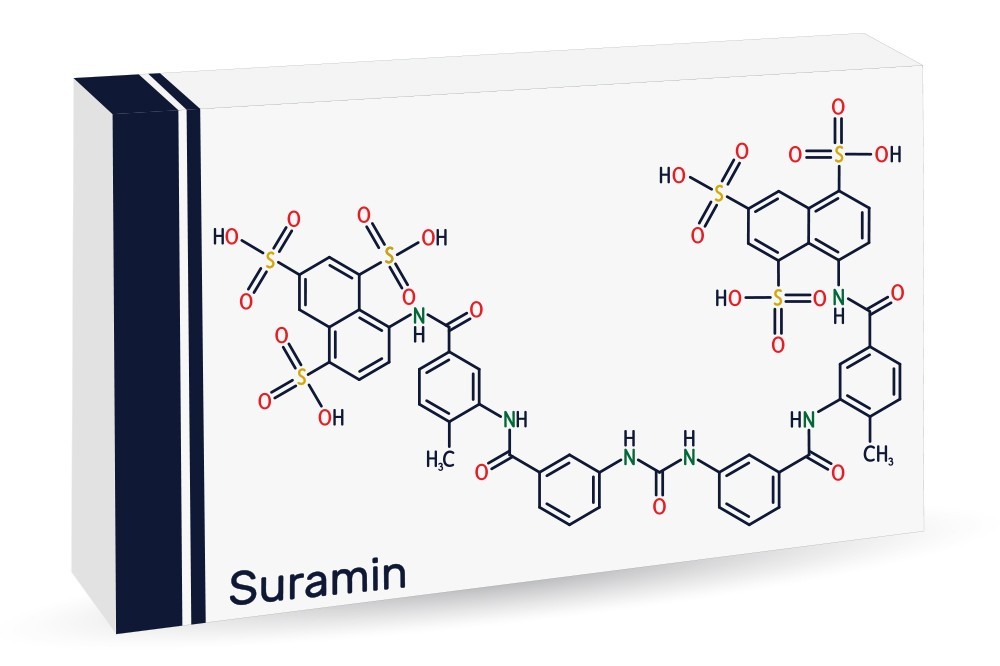
Suramin Studies (antipurinergic drug) Research
Low-dose suramin in autism spectrum disorder: a small, phase I/II, randomized clinical trial (2017)
Hypothesis of the initial study: Autism is the result of a persistent cell danger response (CDR).
The cell danger response (CDR) happens when the body is exposed to stress. It turns on to initiate healing. The problem occurs when the body cannot turn off the Cell danger response (CDR). This leads to ATP (energy) leaking outside the cell, causing symptoms we describe as autism, chronic fatigue syndrome, PANS, and other chronic illnesses.
In mitochondrial disease there is low inter-cellular ATP. However, in autism, there is increased extra-cellular ATP resulting from leaking ATP.
This study used one dose of suramin and resulted in a significant difference in kids that received Suramin, but no difference in placebo group.
- Increased language and social interaction.
- Lower stims and restricted interests.
This science is in research mode only right now. Please do not try to obtain research suramin because it is unsafe.
There are 2 companies doing trials: Pax Medica & Kuzani. Pax Medica’s next trial for Autism will be in 2024. (Past Pax Medica’s trials have been in South Africa.)
You can listen to TACA’s interview with Dr Naviaux discussing his research in this TACA blog titled “Dr Robert Naviaux – Autism and Suramin 2023“
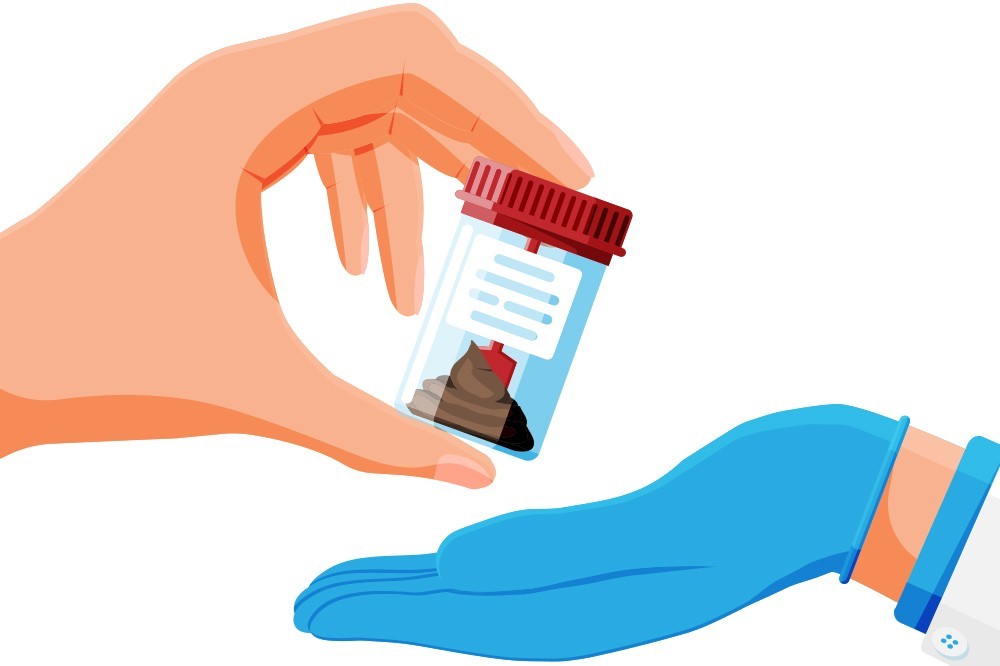
Research on the Gut-Brain link in autism
It is now widely known that there is a link between gut and brain function.
Microbiota Transfer Therapy alters gut ecosystem and improves gastrointestinal and autism symptoms: an open-label study (2017)
This is a study using a special kind of fecal matter transplant on ASD kids called Microbial Transfer Therapy (MTT).
Initial Results of MTT study at 8 weeks:
- 80% reduction in GI symptoms
- 23% reduction of ASD symptoms
- Gut Microbiome went to normal diversity
Follow -up results of MTT study at 2 years:
- 60% reduction in GI symptoms
- 47% reduction in Autism symptoms
- Microbiome diversity was better than the typical person!
Shotgun Metagenomics Study Suggests Alteration in Sulfur Metabolism and Oxidative Stress in Children with Autism and Improvement after Microbiota Transfer Therapy (2022)
Arizona State University (ASU) published a study using metagenomics to evaluate gut bacteria and their genes in samples from their first microbiota transplant study.
The study showed Microbiota transplant increased the diversity of gut bacteria, resulting in a healthier gut. There were improvements in bacterial genes that encode enzymes involving:
- Folate biosynthesis
- Sulfur metabolism
- Oxidative stress
These are all important problems in autism, and this helps us better understand why microbiota transplant is effective for helping people with autism.
Human Gut Microbiota from Autism Spectrum Disorder Promote Behavioral Symptoms in Mice (2019)
Researchers took gut microbes from a human with autism and placed them in mice and the mice developed autism.

Maternal Immune Activation Research
It is believed there are autism subsets. The UC Davis MIND Institute is doing research on one autism subset called maternal autoantibody-related autism or (MAR ASD). This happens when a pregnant mom has autoantibodies that respond to certain proteins. These autoantibodies pass the placenta and enter the baby’s developing brain. Once there, they may alter the way the brain develops in children, resulting in autism-like symptoms.
Maternal autoantibody profiles as biomarkers for ASD and ASD with co-occurring intellectual disability (2022)
- Researchers found 9 specific combinations of proteins in mom’s blood that increase the child’s chances of developing autism. These are the MAR ASD patterns.
- In addition, 4 of these patterns were ONLY present in moms who had children with autism. That means if a mom has these patterns in her blood, she is highly likely to have a child with autism.
- Therefore, a mom with reactivity to any 1 of the 9 MAR ASD patterns has around 8 times the chance of having a child diagnosed with autism.
Conclusion
The science and research is ever-evolving. We hope that it will lend help to those living with autism daily.
TACA Programs
TACA has many programs to help parents on their child’s autism journey. See this TACA webpage to see what we offer and get involved!



